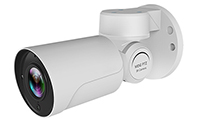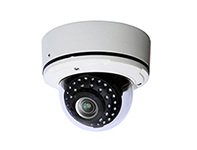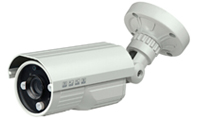We are an experienced HD IP cameras manufacturer and your trustworthy supplier, we offer a diversity products for your IP video surveillance applications. By employing the latest processor and high-performance CMOS image sensors from the industrial leading brands including Hisilicon, Sony, TI, OmniVision, our HD IP cameras are able to capture high quality video not only comes with megapixel resolution, but also has accurate color reproduction.
HD IP cameras including conventional Hisilicon H.264 series and Super HD H.265 series. The Hisilicon H.264 series portfolio is designed to meet the demands of achieving the cost-effective video surveillance, while the Super HD H.265 portfolio quite fits the high-end commercial video surveillance projects. Regular H.264 IP cameras adopt Hisilicon Hi3518E/Hi3516C SoC to deliver crystal clear video with 720p/1080p resolution, that’s quite sufficient for IP surveillance of home and small business.
By leveraging the Hisilicon H.265 SoCs (Hi3516D and Hi3516A), our Super HD series cameras can achieve up to 5-megapixel real-time video performance. This product portfolio including 2-megapixel WDR cameras, 4-megapixel HDR cameras and 5-megapixel Starvis cameras.
In terms of video recording solution, we provide an arrary of HD network video recorders that includes regular H.264 NVR (Hi3520D, Hi3521, Hi3535), and PoE NVRs feature Power over Ethernet technology to offer plug-and-play installation, 4K NVRs (Hi3536/Hi3798M) that not only offers video recording, previewing, playback with the maximum 12 megapixel resolution, but also provides smart video analytics including cross line detection/perimeter detection, region detection, object counting, object detection. Most importantly, this intelligent video analysis can be achieved by smart NVR itself.
All our IP surveillance equipment are compliant with ONVIF standard (version 2.4, Profile G, Profile S), they can be easily integrated with third-party’s cameras and NVRs, as well as video management software platforms.
Why use Hisilicon IP video solution?
Cost-effective but high quality and reliable IP surveillance equipment.
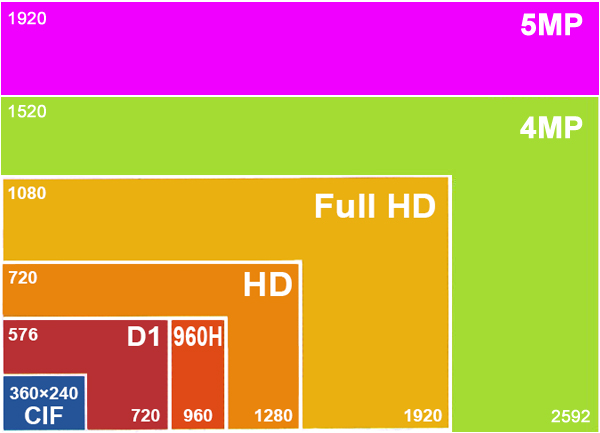
5-Megapixel Resolution

H.265 IP Surveillance
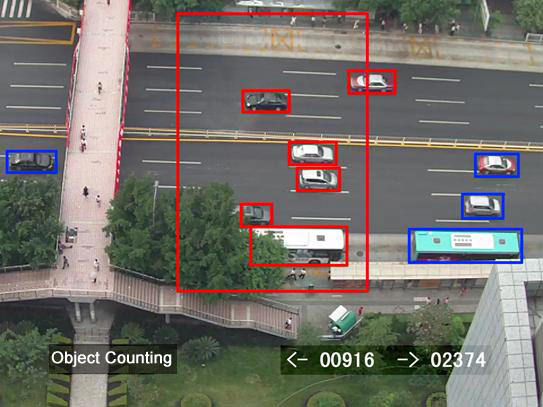
Smart Video Analytics
1080P/2MP Mini PTZ Bullet Camera
2MP/1080p outdoor camera supports pan tilt zoom, Hi3516CV300 + Sony IMX323 hardware solution, vivid color video, excellent low light performance, supports 2.4G Wi-Fi, 128G SD card slot
4K IP H.265 Vandalproof Dome Camera Hi3519V101 Sony IMX271
4K vandalproof dome security camera, 4K 30fps (Hi3519V101, IMX274), 4K 15fps (Hi3516AV200, IMX274/OS08A10), HDR, 3.6-11mm vari-focal lens, 20m IR distance
4MP H.265 IP Bullet Camera with IR
What type of camera should you use?
We offer several different types of security camera which can better meet the different needs from clients. As we know the features and functions vary according to the type of the camera. Here are the most common types of security cameras and their differences.
- Wi-Fi/Wireless IP camera – data communication wirelessly, easy installation, no wiring.
- Network/IP camera – transmits video/images through the network, suitable for those who want to monitor a location while they are away.
- Day/Night Infrared Camera – outdoor surveillance, can see clearly even it works in varying light conditions, perfect for 24/7 surveillance.
- Bullet Camera – Long distance outdoor video surveillance, strong deterrent
- Dome Camera – discreet and indoor surveillance with wide viewing angle
- PTZ Dome Camera – large area video surveillance, identifying face, car plate license number and other applications which fine detailed image is required.
What if the system encounters a power outage?
Intending to reduce the cost, many video surveillance systems are installed without using the Uninterruptible Power Supply. Once the system counters a power outage, the entire system will down. To commercial video surveillance system, we recommend users to use the UPS as the backup. With a UPS backup, if you have a power outage your security cameras will still be operating.
Should I use PoE or Wi-Fi wireless technologies?
Choosing PoE or Wi-Fi wireless and other technologies depends on your particular requirement. For indoor video surveillance, W-Fi video surveillance systems can be suitable in most cases. However, as the Wi-Fi coverage limits to 20-30 meters or the installation places have many obstacles that distract the signal. For the long distance outdoor video surveillance, Power over Ethernet (PoE) is the best choice. The maximum connection distance by using PoE can reach up to 90 meters in real installation.
What factors determine camera’s performance?
There are so many choices when we face to choose security cameras for our video surveillance systems, here are the most important factors determine your camera’s performance:
- Lens: camera’s lens determines how wide and how far the camera can see. For short video and wide viewing angle, a focal lens 2.8mm/3.6mm is perfect. A big focal lens can provide a narrow but long distance viewing. E.g. In order to obtain clear face feature of the suspicious people, you may use a 10mm or 12mm lens.
- Image Sensor: usually a higher resolution image sensor can capture higher image quality video. There are two other important characteristics that determine your camera’s performance, one is minimum illumination which tells you how much light is required in order to capture image. The lower of the minimum illumination, the higher the camera’s light sensitivity. Another factor is WDR/HDR, it’s a sensor-based technology to improve imaging performance.
- Core Processor: image sensor converts light to electrical signal, and then processed by the image signal processor (ISP). The camera’s core processor like your computer’s CPU, it’s the brain of your camera that mainly determines your camera’s imaging performance. A core processor for IP camera will consists of many different components including ISP (processing image signals e.g. AGC, AWB, Brightness, Contrast, Image Distortion Correction and so on), Codec (compressing the images according to the video compression standard e.g. H.264, H.265), Peripheral interfaces (I/O to transmit data and control the lens/motors).
- Frame rate: also known as frame frequency and frames per second (FPS), is the frequency (rate) at which an imaging device produces unique consecutive images called frames. 25fps is the frame rate for real-time video in PAL TV system, while 30fps is the frame rate in NTSC TV system.

